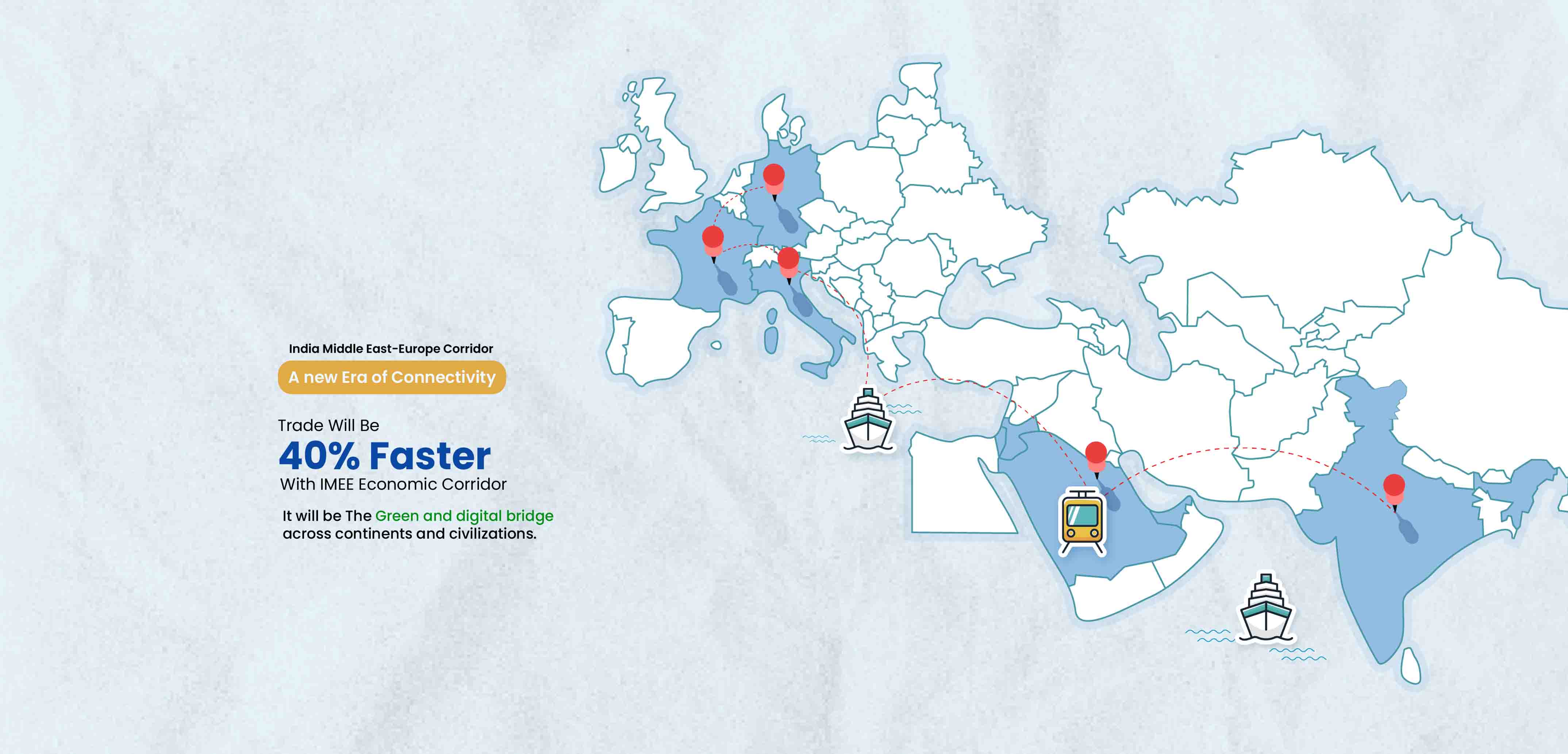
India's Trade and Logistics Potential with IMEE EC
India's Trade and Logistics Potential with IMEE EC
The G20 summit has ushered in a series of initiatives, marking a departure from a solely economic-centric approach to a broader, more human-centric perspective. This shift places a significant emphasis on achieving sustainable development goals, establishing digital public infrastructure and promoting women-led development, among other noteworthy endeavours. Within the context of the Summit, the India-Middle East-Europe Economic Corridor (IMEE EC) has emerged as a prime example of the transformative potential within international trade and logistics.
IMEE EC Aligns with India’s Long-Term Goals
This corridor stands as the most ambitious multilateral project aimed at stimulating economic integration and development between India, Europe, and West Asia. Its core concept involves linking India to Europe through the Middle East, comprising two distinct corridors: the Eastern Corridor, connecting India to the Middle East, and the Northern Corridor, linking the Middle East to Europe. This endeavour goes beyond mere transport; it encompasses a comprehensive connectivity corridor featuring a railway link, shipping connections, electricity cables, high-speed data cables, and even a hydrogen pipeline.
The railway component not only facilitates trade between India and Europe but also opens up opportunities in the energy sector, particularly in green hydrogen. It offers a reliable, cost-effective cross-border transit network that complements existing multi-modal transport routes while enhancing transhipment between Southeast Asia and the Middle East. This project brings significant strategic and economic advantages by reducing transit times and bypassing historically troubled trade routes through Pakistan and Afghanistan, reviving the age-old spice route. Presently, goods bound for Europe mainly rely on the Suez Canal route, taking 18 days to reach from Mumbai. The proposed corridor aims to cut transit time to just 10 days, a remarkable 40% reduction, benefiting India's trade with the EU. Improved accessibility, a more secure supply chain, and enhanced food security are also expected outcomes.
Fostering Innovation & Cooperation
This project has the potential to stimulate our economy and society significantly. IMEE EC opens doors for multilateral funding across various sectors like technology, energy, telecom, and high-speed networks. By embracing this initiative, India can break through previous connectivity barriers and challenges such as those by China's Belt and Road Initiative (BRI). Transport costs between India and Europe are poised to shrink by 60%. The allocation of funds for long-term logistics and economic objectives within IMEE EC, along with India's efforts to bolster internal infrastructure, will profoundly influence the project's success. Ensuring that India's ports and inland infrastructure are ready is essential to fully reap the benefits of this transformative endeavour.
IMEE EC can help India establish its position as a leader in the global supply chain in Asia. However, experts emphasise the pressing need for an extended period for comments on this project, underscoring the importance of a comprehensive and inclusive decision-making process. This project, if executed effectively, holds the promise of catalysing transformative change within the countries in question by harnessing the latent economic potential of their regions. Such transformations might encompass a spectrum of developments, including bolstered economic growth, heightened job opportunities, and enhanced infrastructure.
The success of these initiatives hinges significantly on the meticulous execution and implementation of the associated agreements. The effectiveness of project management, allocation of resources, adherence to timelines, and ability to navigate unforeseen challenges will play pivotal roles in determining whether these ventures can live up to their transformative potential. Consequently, stakeholders must collaborate closely, monitoring progress, and adapting strategies as needed, to ensure that this project contributes positively to the economic and social fabric of their respective countries.